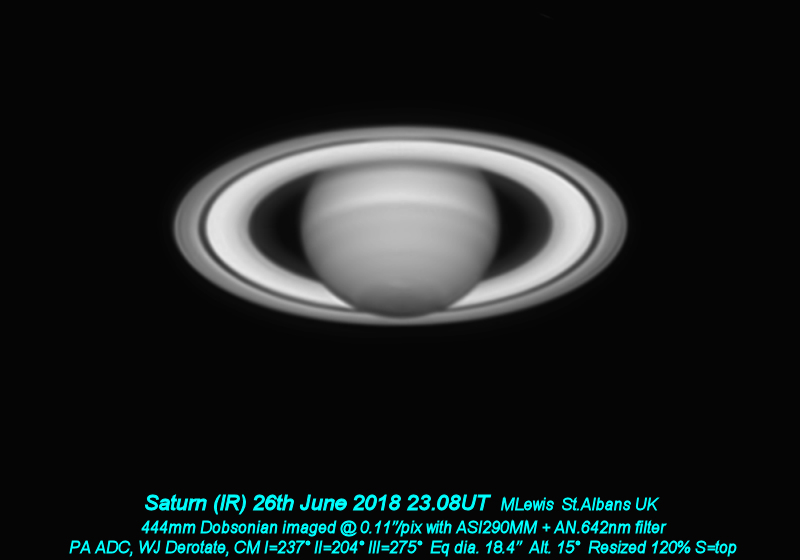Martin reports that this is the first Saturn image this season, taken under very good conditions for the altitude (15°) just a few hours before opposition and showing what is often called the "Seeliger effect". However, David Arditti has questioned the use of this term for Saturn and the rings as follows:
While Hugo von Seeliger (1849-1924) did observe the opposition brightening of Saturn’s rings, his proposed explanation was incorrect. He proposed that at opposition the particles in the rings line up as seen from the Earth so that the shadows of the nearer particles on the further particles are not seen, and therefore the overall intensity of light reflected back is higher. However, the actual measured brightness of the rings shows a very sharp peak at close to zero phase angle, whereas the ‘shadow hiding’ effect should just be a smooth curve. Also, there is a wavelength dependence of the effect that cannot be explained by shadow hiding. The correct explanation is "coherent backscattering", an interference effect in the way that light is scattered back off the ice crystals, that is similar to the brilliant reflectivity of snow (or indeed the top of Olympus Mons on Mars at opposition) and also similar to the way multi-layer road signs work.
It was a previous director of the Saturn Section, David Graham, who told me it should not be called the Seeliger Effect, but the "Opposition Effect" or "Coherent Backscattering". When I looked into it for writing an article in the Journal (which is here), I could find no reference to the ‘Seeliger Effect’ in any professional paper. It seems it is a term only used on amateur astronomy websites and social media. There is a Lommell-Seeliger theory of planetary brightness (explained here), but that does not explain the low phase angle Opposition Effect (indeed it is its major defect).
So the situation is a bit confused. I’m not quite sure where the terming of the opposition brightening of the rings the ‘Seeliger Effect’ came from first of all, but it’s certainly popular. I suppose it depends if you think the name of an effect should represent the observation of the effect, or the explanation of it.
David goes on to say that the BAA tends to pride itself on authoritative explanations and terminology, and for this reason the text associated with Martin's image has been modified.


